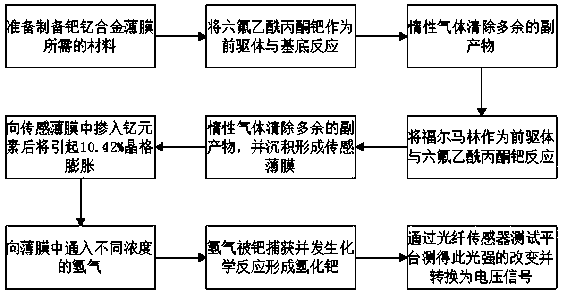Method for detecting hydrogen by palladium nanoparticle discrete film
A palladium nanoparticle and thin film technology, applied in the field of hydrogen detection, can solve the problems affecting the accuracy of hydrogen, poisoning, etc., and achieve the effects of avoiding phase transition, suppressing zero offset, and ensuring accuracy
- Summary
- Abstract
- Description
- Claims
- Application Information
AI Technical Summary
Problems solved by technology
Method used
Image
Examples
Embodiment Construction
[0017] The technical solutions in the embodiments of the present invention will be described clearly and completely below. Obviously, the described embodiments are only a part of the embodiments of the present invention, rather than all the embodiments. Based on the embodiments of the present invention, all other embodiments obtained by those of ordinary skill in the art without creative efforts shall fall within the protection scope of the present invention.
[0018] The invention provides a technical solution: a method for detecting hydrogen by a palladium nanoparticle discrete film, comprising the following steps:
[0019] (1) First prepare hexafluoroacetylacetonate palladium (II), formalin, quartz glass substrate, high-purity nitrogen and carbon support membrane;
[0020] (2) Palladium (II) hexafluoroacetylacetonate is introduced into the reaction chamber as a precursor in a vacuum environment, and palladium (II) hexafluoroacetylacetonate is used as a precursor to chemical...
PUM
 Login to View More
Login to View More Abstract
Description
Claims
Application Information
 Login to View More
Login to View More - R&D
- Intellectual Property
- Life Sciences
- Materials
- Tech Scout
- Unparalleled Data Quality
- Higher Quality Content
- 60% Fewer Hallucinations
Browse by: Latest US Patents, China's latest patents, Technical Efficacy Thesaurus, Application Domain, Technology Topic, Popular Technical Reports.
© 2025 PatSnap. All rights reserved.Legal|Privacy policy|Modern Slavery Act Transparency Statement|Sitemap|About US| Contact US: help@patsnap.com

